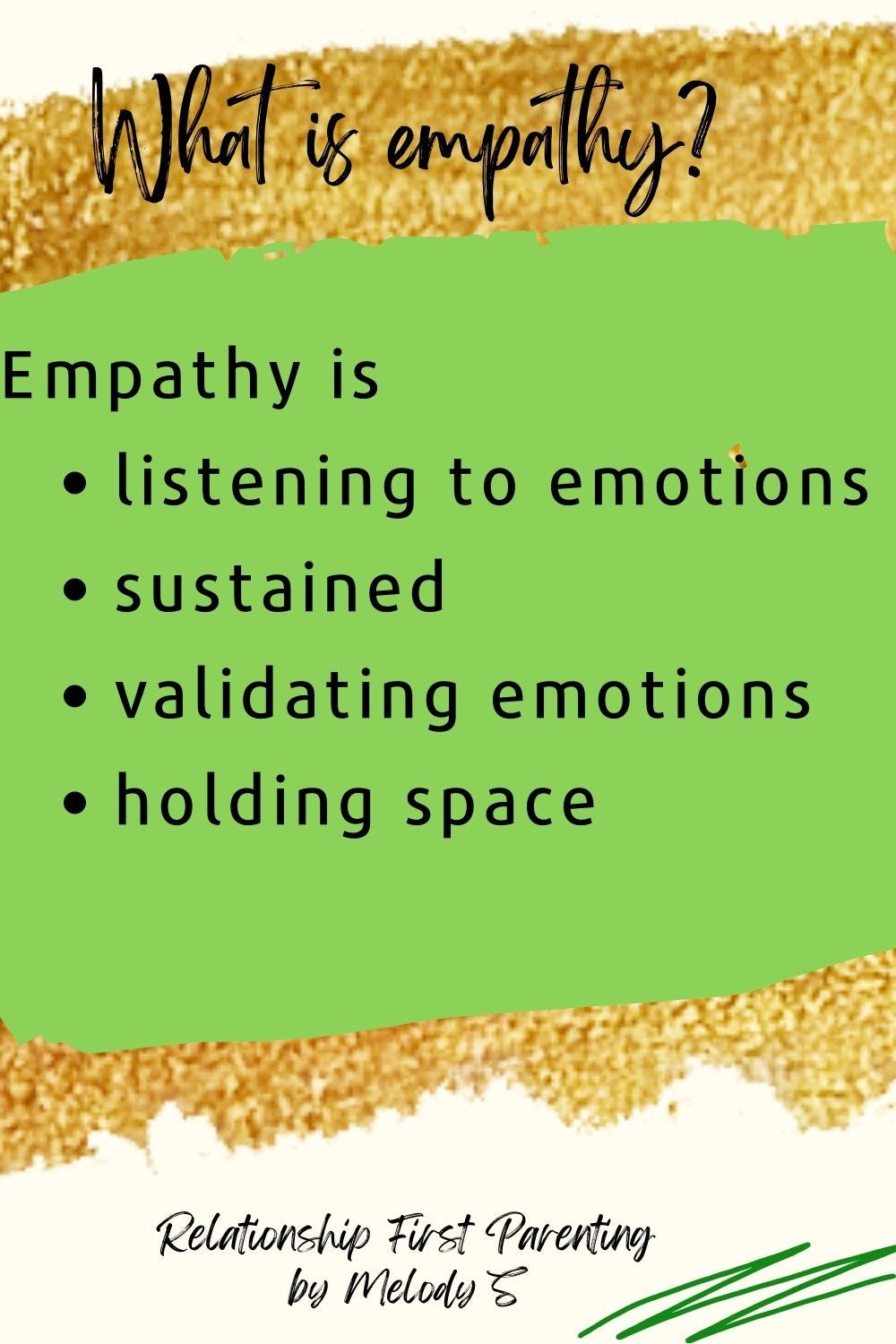“Empathy has no script. There is no right way or wrong way to do it. It’s simply listening, holding space, withholding judgment, emotionally connecting, and communicating that incredibly healing message of ‘You’re not alone.’” — Brene Brown
Empathy is the message, “I feel what you feel and what you are feeling is understandable.”
Empathy is not fixing or solutions. Empathy is holding space. Sometimes remaining quiet and calm while being with the expressed emotions. Sometimes matching the energy of the emotion, so we remain connected.
Too much emotion and we take over, while too little feels like detachment.
Empathy is sustained
Often, people gloss over the empathy saying the right words. Except right after you start fixing or stating your concerns or opinion. We often state empathy, as my friend Vivek says, “empty but….”
The but erases the empathy.
For example,
"I know you're upset, but you can't sleep past 7 am on Saturday when you are 3-year-old."
Versus
"Oh geez. When my kids were their age, it was so hard to get out of bed on the weekends before the sun was up. All I wanted was to sleep past 9. Do you feel that way?"
Essential skills for empathy
To respond with empathy, you must have emotional awareness.
Knowledge of emotions
Recognizing emotions within yourself
Ability to express emotions without losing control
Week 2 goes into parents, emotions, expressing and self regulation.
Holding space
We hold space when someone is upset and we stay with them without judgement.
We give them attention. Listen. We give them validation. We see the person who is struggling.
And we do all this unconditionally.
Reflection
Reflecting is a communication technique.
Your goal is to restate the words and feeling of the speaker. The speaker, your child, feels heard, understood, and focuses on their thoughts. As a reflector, we don’t add in new ideas or our thoughts. This gives space for them to continue expressing themself.
Repeat back in short phrases what they are saying.
Reflecting emotions is important.
We often express emotions as body language and word choices. As parents, we must reflect these cues to label emotions. We can also clarify statements into emotions.
“It’s not fair. They always get to go first.
“Hmm. You seem frustrated because little sister chooses the first book we read at bedtime.”
Ability to slow down
Emotions we respond to often come fast.
We need to pause and centers ourselves before responding. Taking five to ten seconds to relax can be helpful to remember how to respond.
Giving ourselves space makes empathy possible.
Do you rush with empathy? Do you want to fix or end upset? Are you comfortable holding space for emotions?
A couple of resources for becoming familiar with the nuances of emotions:
Andrew Huberman podcast on the neuroscience of emotions
This is part of my introduction to Relationship First Parenting course. To see more posts please subscribe.
This is version 2.0 of this course. To go along with the course, I have started a Facebook group where you can ask all your questions. The lessons will be posted there as well as guides.
I have also created a journal for each week. You can download and print the pdf or make a copy of it in Googledocs to answer. You can share your answers in the comments of each post, or in the Facebook group.


